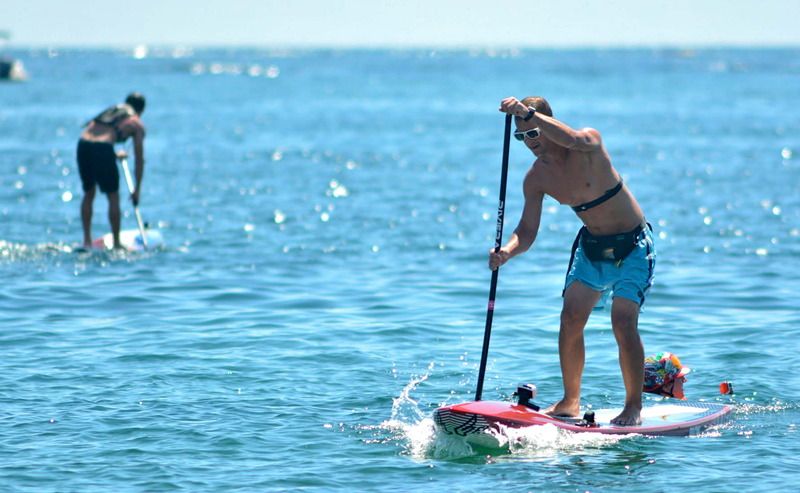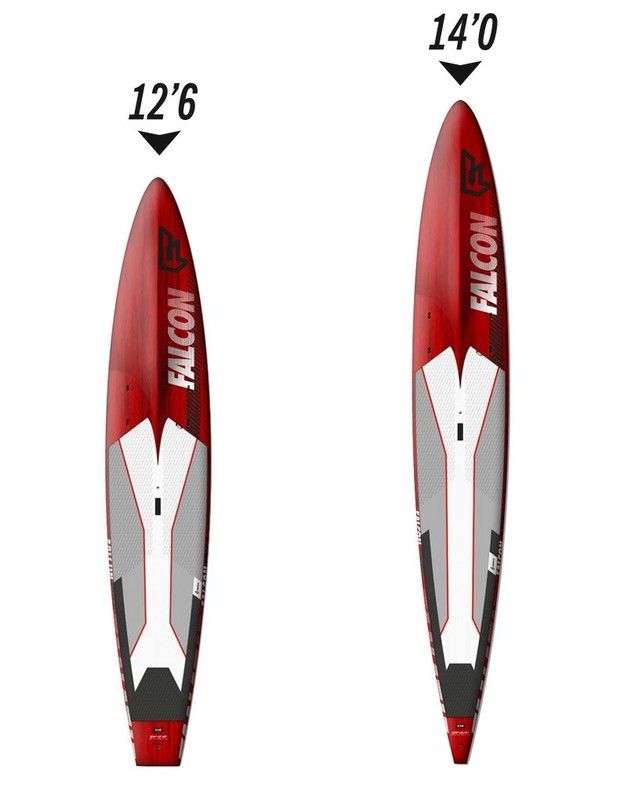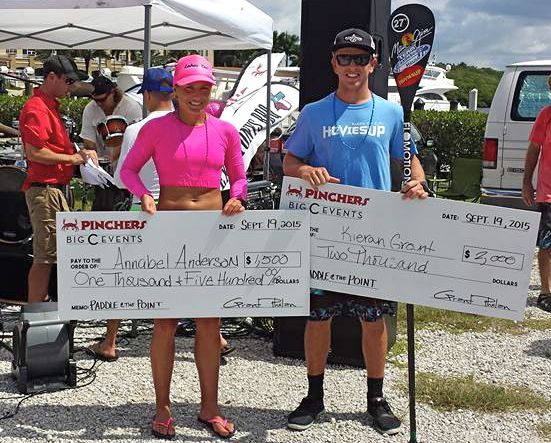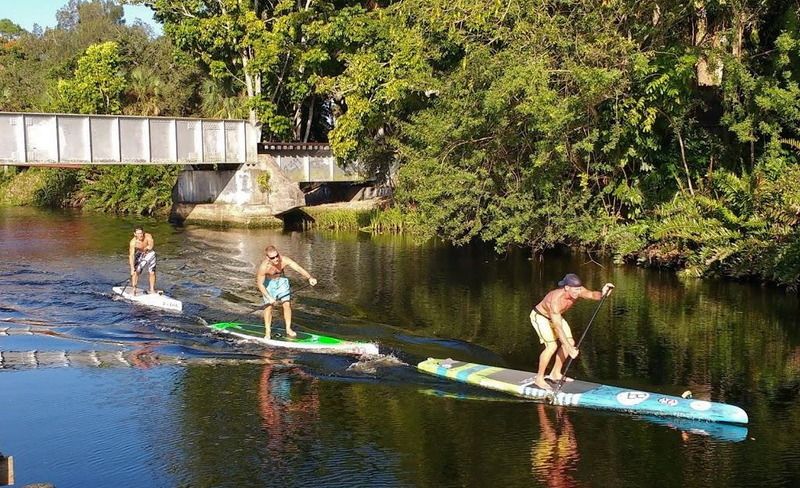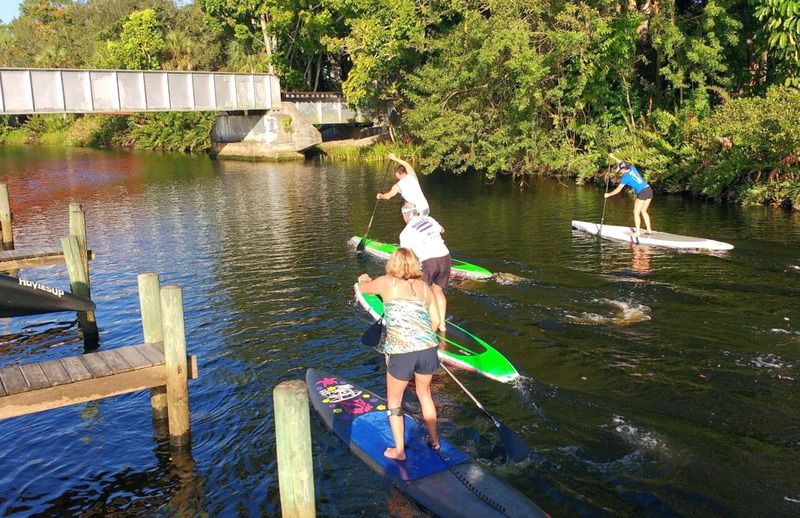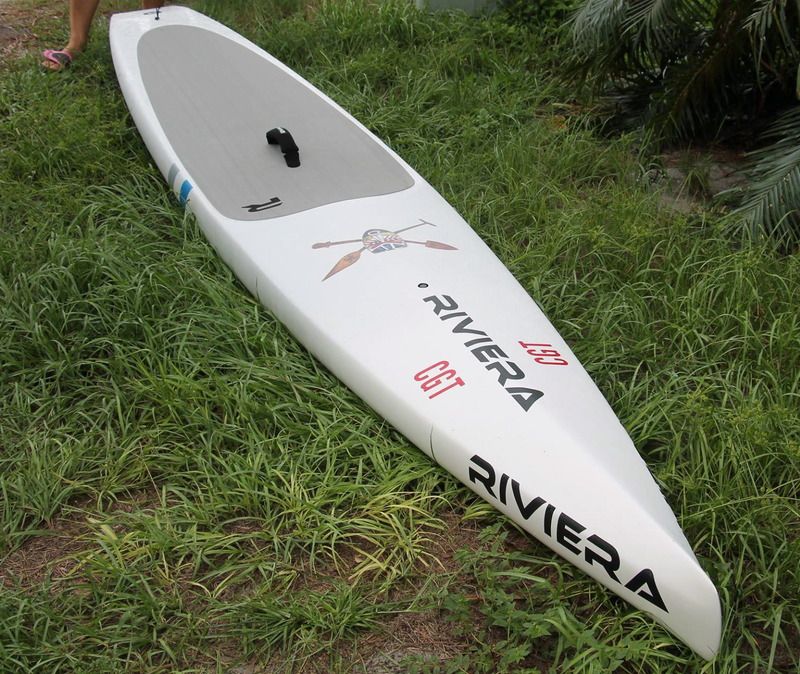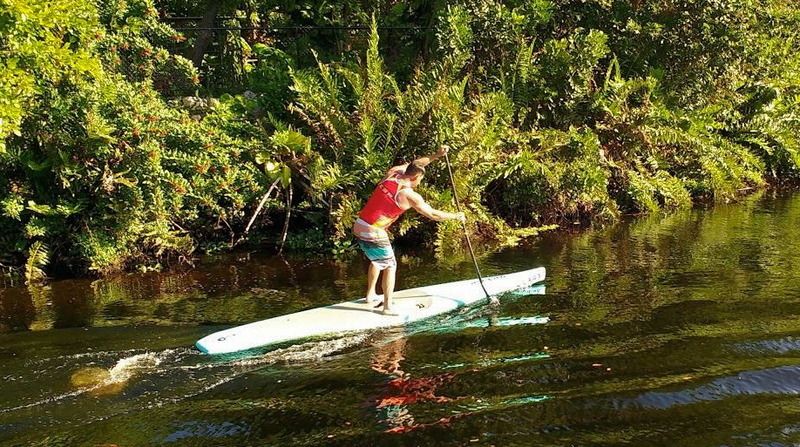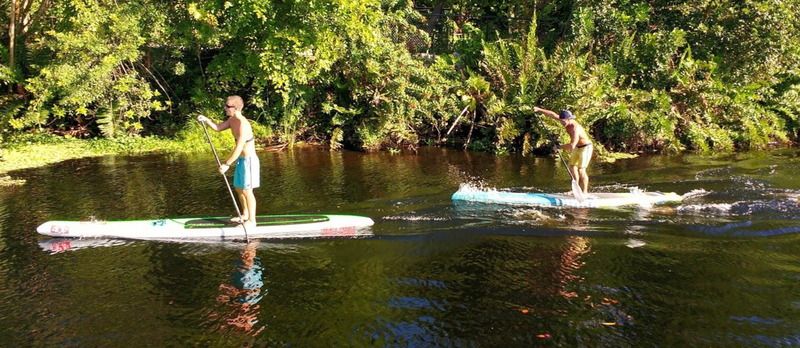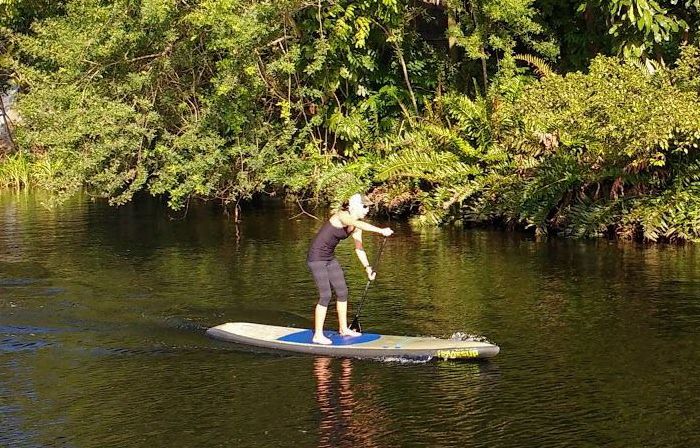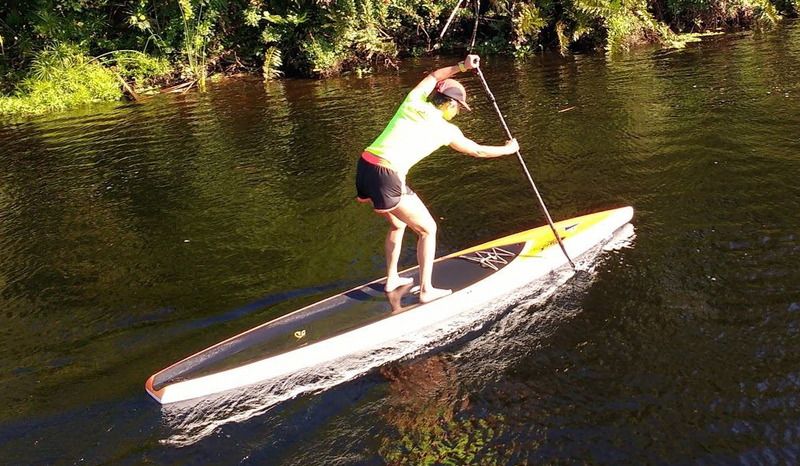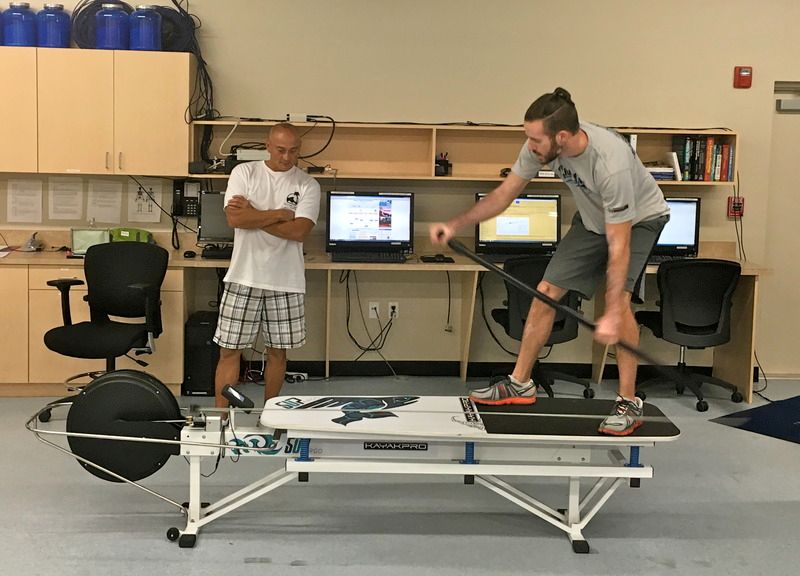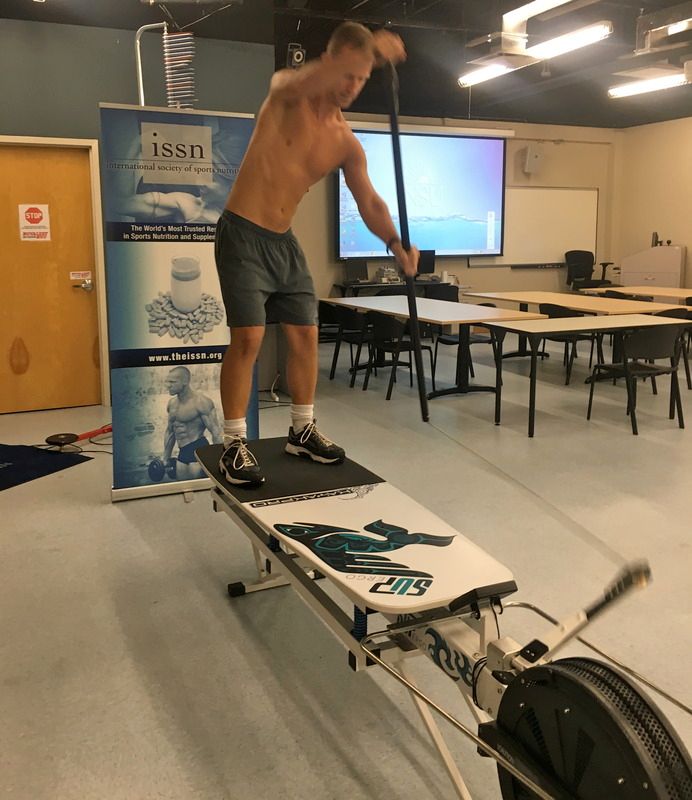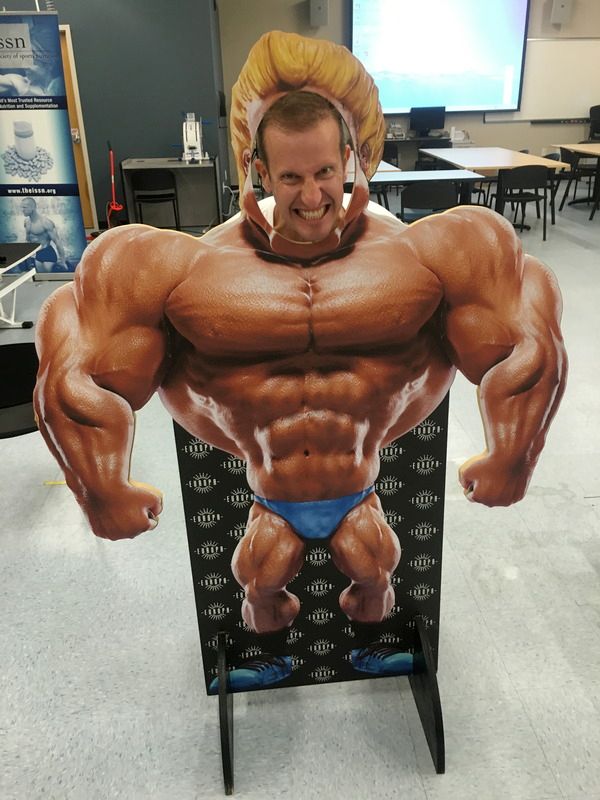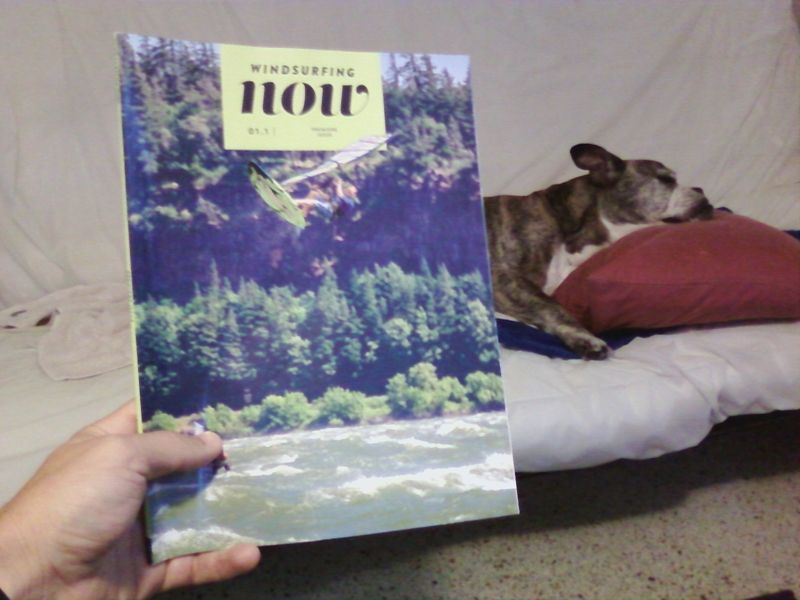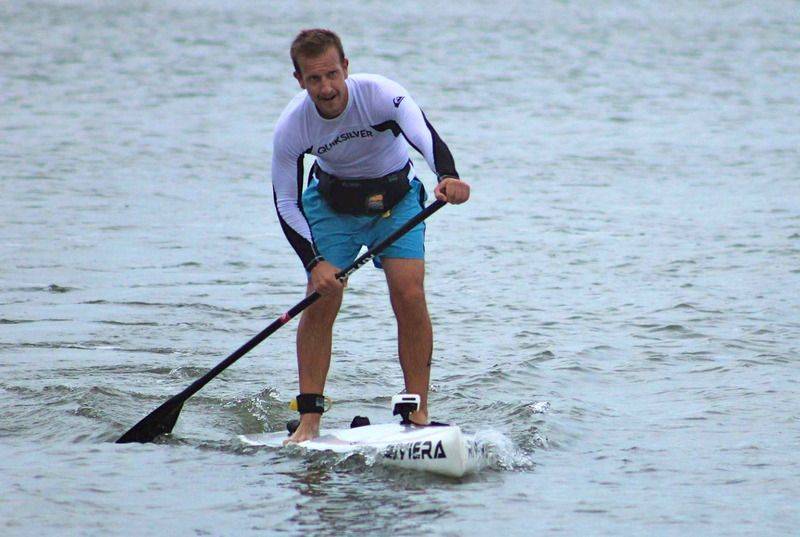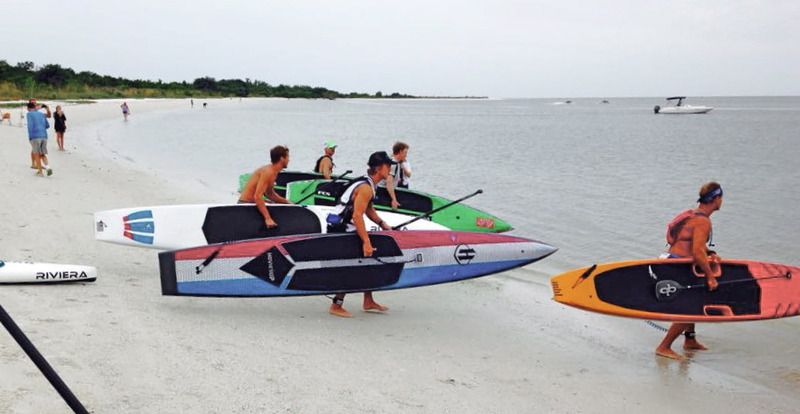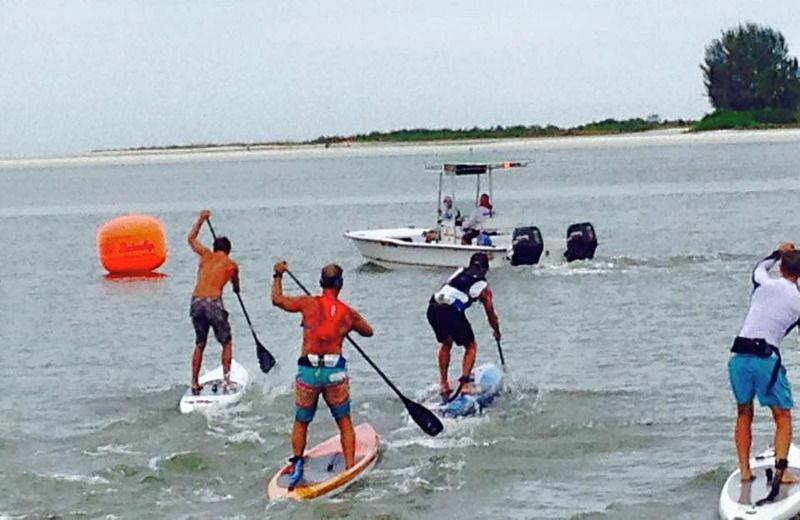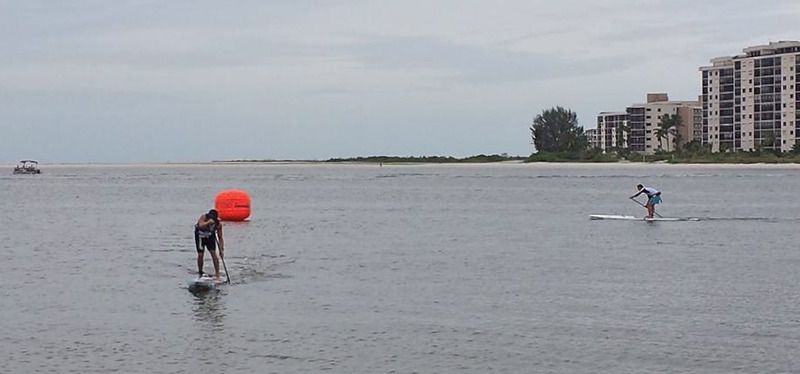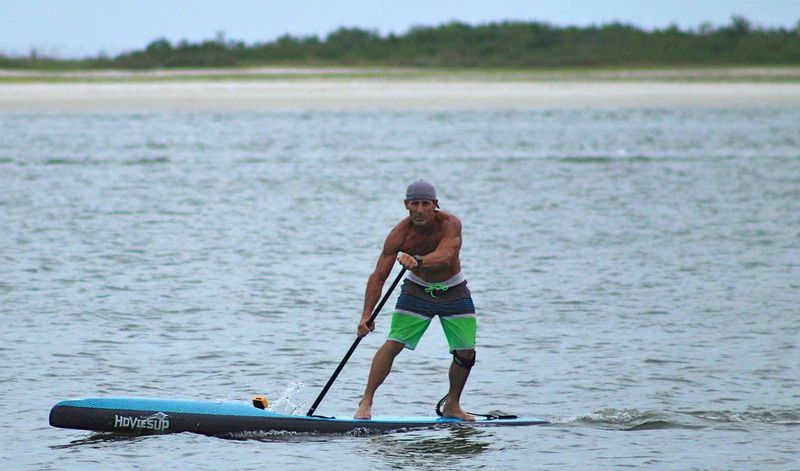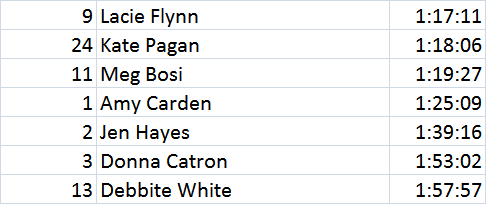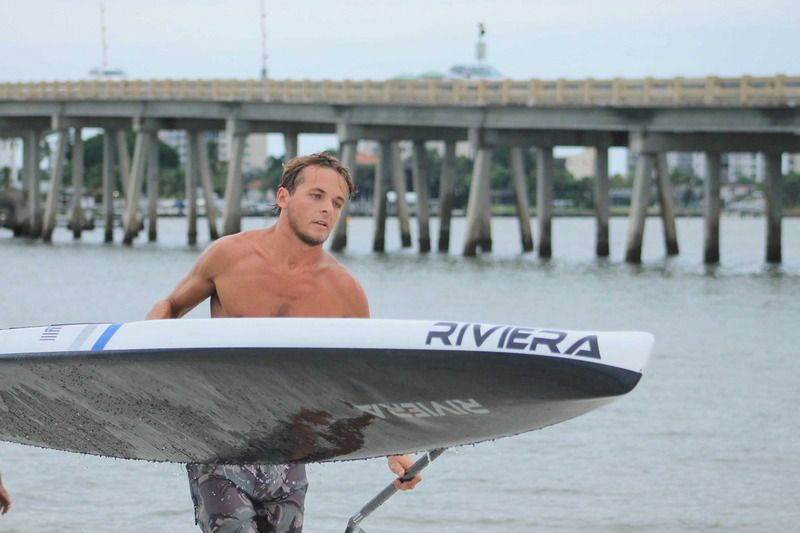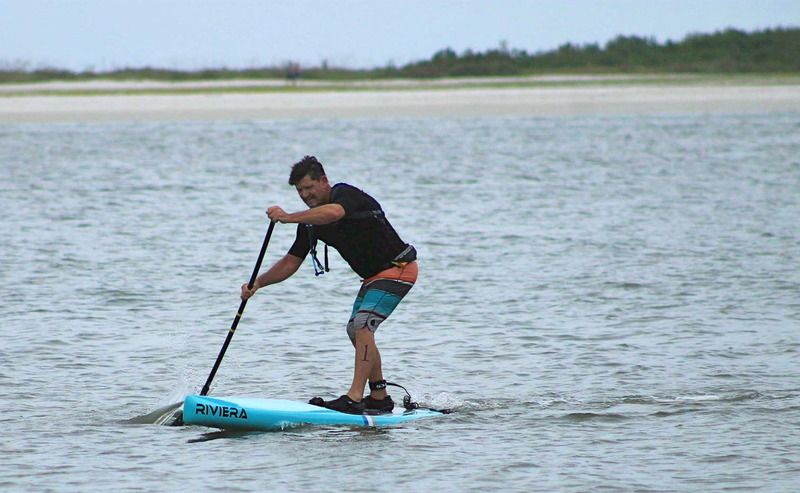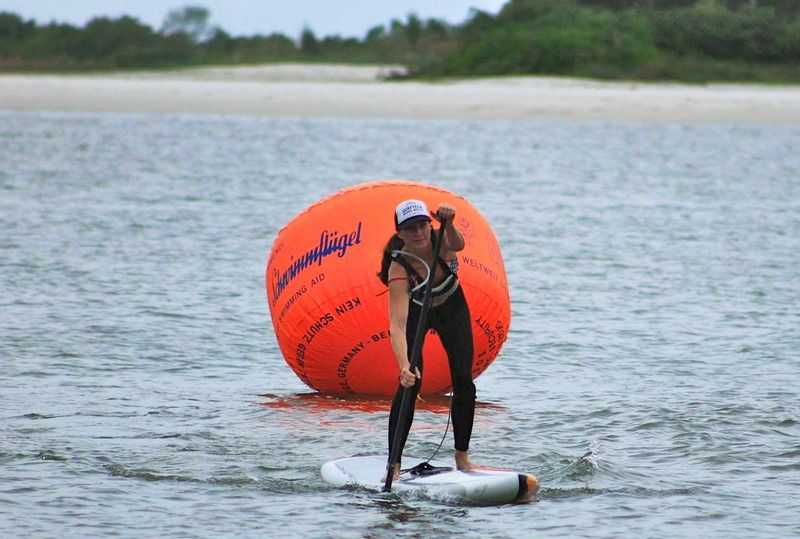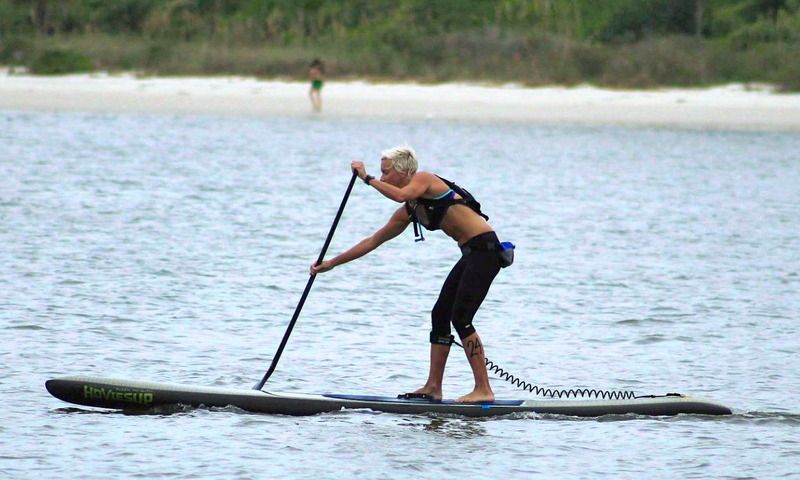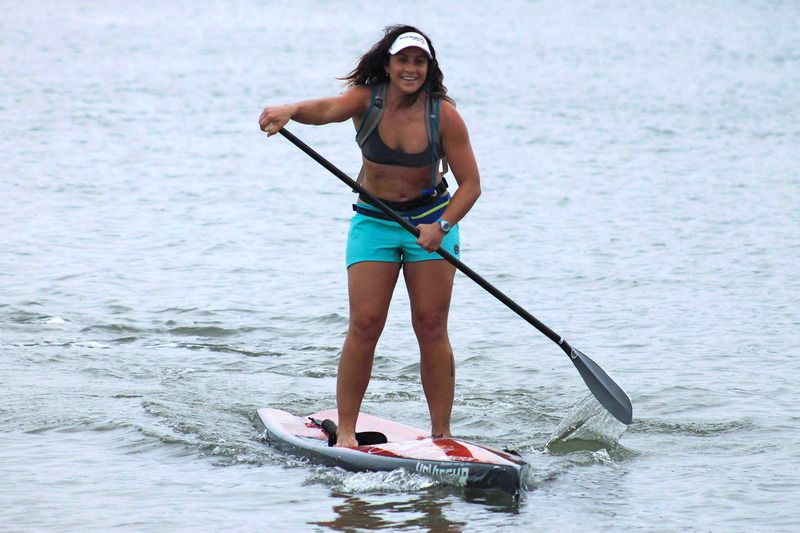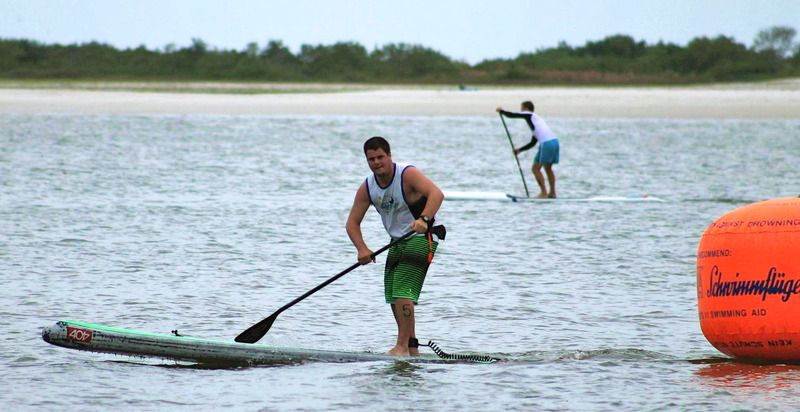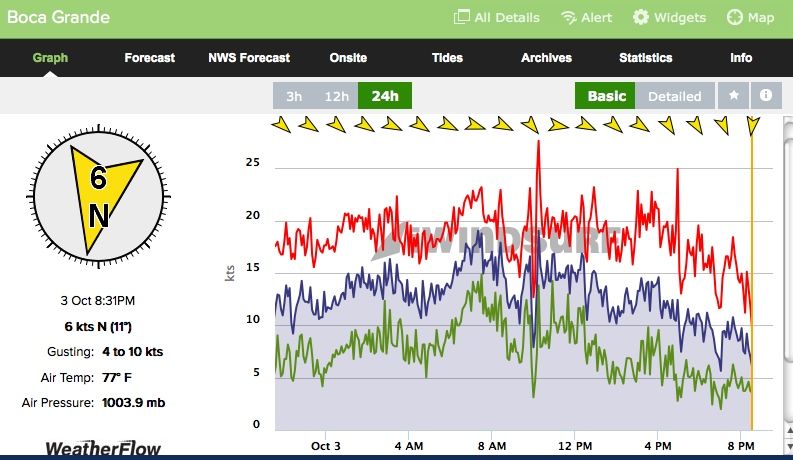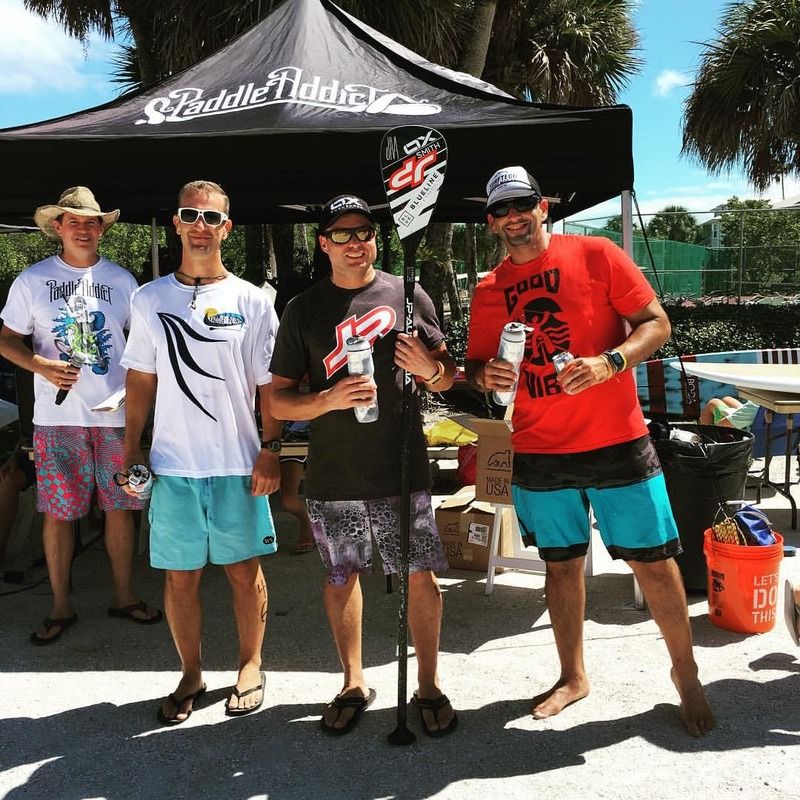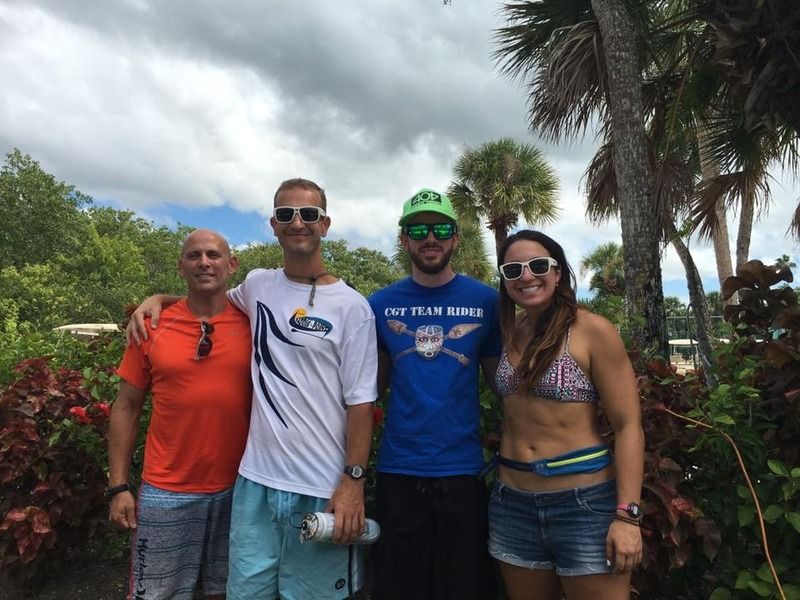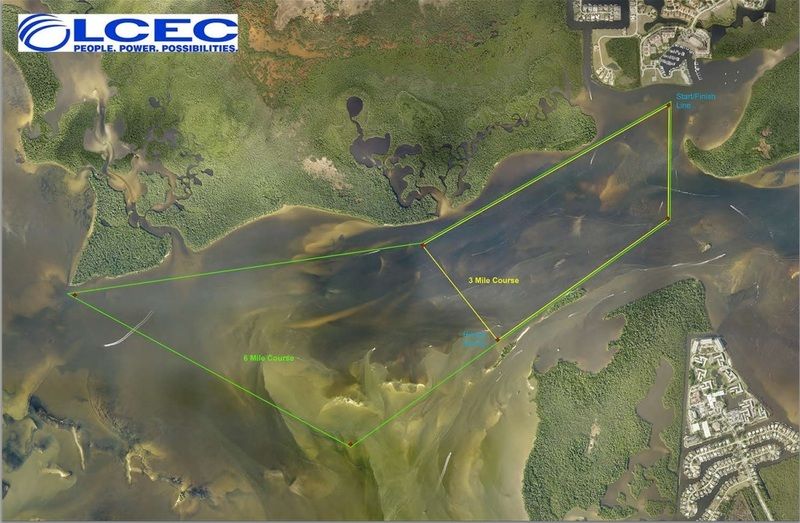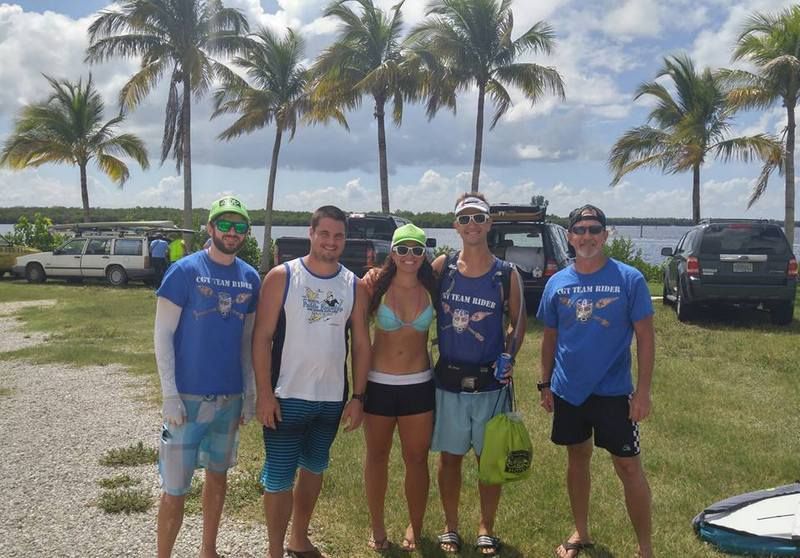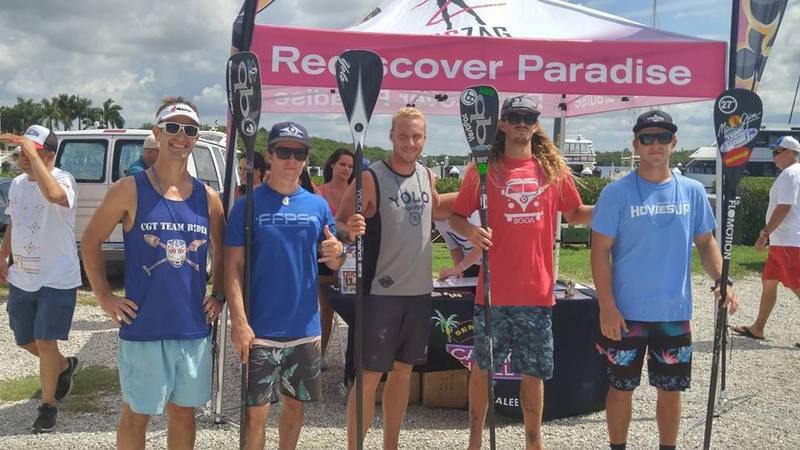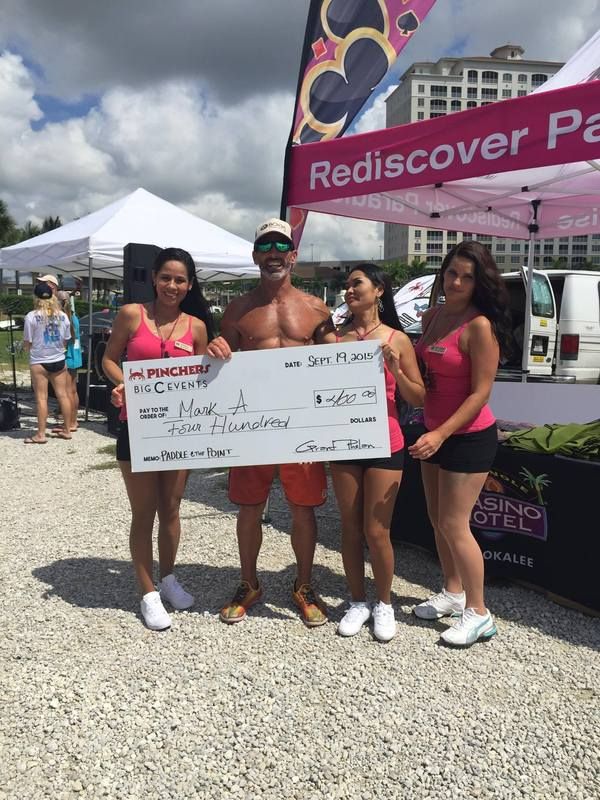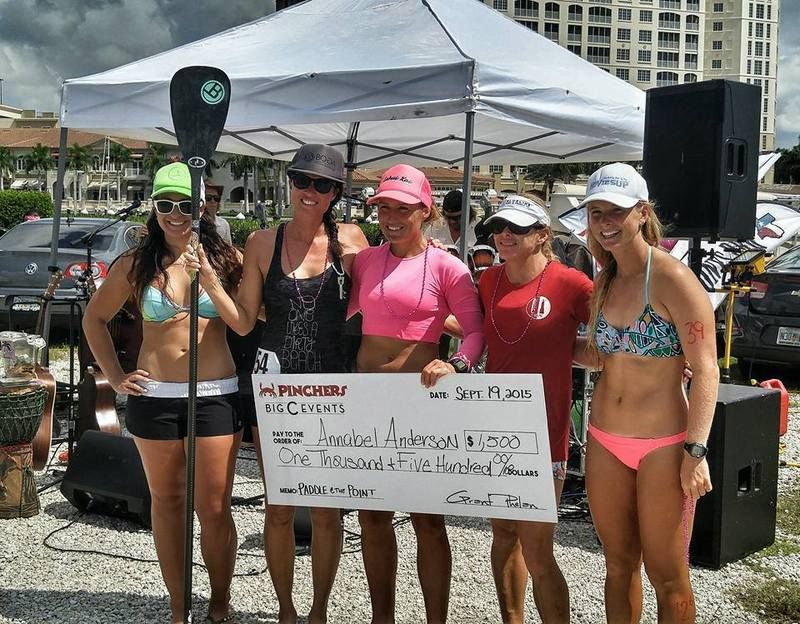With apologies for tooting my own horn, I’ll say that I’ve become a pretty fast amateur SUP racer over the last year or so. If there are 5 tiers of SUP racers (see below) I’m probably on the middle tier now. For each tier I estimated the speed that riders on that tier might average in a mid-distance flatwater race. This is assuming 18-49 year old male riders on 14’ sups.
Professionals, 10 kph
Best-in-Florida sponsored racers, 9.5 kph
Avid amateurs who train hard and have good gear, 9.0 kph
Competent mid-pack racers who train and have decent gear, 8.0 – 9.0 kph
Folks who like racing but aren’t quite up to speed in terms of gear and training, <8.0 kph
In this post I’ll recap how I got to the “avid amateur” level, and I’ll include advice for other people who might want to “level up” their SUP racing. For those who don’t want to read the whole thing, here are the Cliff’s Notes:
1. Train by regularly paddling hard, striving to improve technique, and pushing yourself through discomfort to the limits of your strength and aerobic abilities.
2. Use gear appropriate to your conditions and commensurate with your abilities; test gear often and upgrade when worthwhile.
3. Meticulously track your performance data and use them to evaluate the effects of your fitness training, technique changes, and gear upgrades.
4. Repeat steps 1-3 over and over.
Full story:
 The beginning
The beginning- My race SUP training started in September 2014 when I decided to enter a race on the Imperial River near my house in Bonita Springs, Florida. The first thing I did was get a map of the ~7km racecourse from the organizers at
CGT kayaks and paddleboards. Then I paddled the exact course at a moderately strenuous pace and timed myself. The board I used was my fastest SUP at the time- an 11’8” x 32” (360 x 81 cm) Exocet WindSUP.
Lessons learned- Just do it. Start with the gear you have.
Rapid gains phase 1- On the graph you can see that I made significant speed gains each time I did the race course on the WindSUP. In just a few weeks I went from 6.3 kph to 7.5 kph; which meant finishing the course about 10 minutes faster. During that time my muscular and aerobic fitness improved rapidly, and the excitement of improving helped me push myself harder. I studied stroke technique on the Internet and tried to apply what I learned, like using core muscles instead of just arms and shoulders. I also learned to reach further with the paddle, and I cut my paddle down from overly long to appropriately short. By experimenting with where to stand on the board I found that I was fastest when standing forward enough for most of the nose to contact the water, but back enough for the tail to maintain light, even contact with the water. Concurrent with what I was doing on the water, I also quit drinking alcohol, did pushups, pullups and situps, and started running more often to improve my aerobic fitness and lose a couple pounds of fat.
Lessons learned- Track your progress in a consistent way. Work on both fitness and technique. Adjust your lifestyle to embrace your paddling goals.
Rapid gains phase 2- Although I only caught the last two races in CGT’s 2014 summer race series, I was totally hooked, and I bought my first race SUP. It was a 14’ x 26” 404 pintail zeedonk. I chose a 14’ board instead of a 12’6 board for a simple reason: because 14’ is faster than 12’6, and I wanted something that would be dramatically faster than the 11’8 WindSUP. The zeedonk instantly made me 5 minutes faster on the course and brought my average speed up to 8.16 kph. (Interestingly, though, the 5 minutes improvement from the board switch was less than the 10 minutes improvement from practicing, reminding me that the board isn’t everything.) I made steady improvements on the raceboard, but the gains weren’t huge like when I first started practicing. Some of the gains were from experimenting with fins. I found that a sleek, weed-shedding fin was the fastest and the straightest-tracking. My best run on the zeedonk was 8.6 kph, using that fin. Although the zeedonk was plenty fast I sold it because I was worried about damaging it, since it was super light with just a thin, flexible skin of black carbon fiber.
Lessons learned- Consistent, hard practice makes you a lot faster. A 14’ raceboard also makes you faster, but be cautious about super light black carbon ones. Get a fin that sheds weeds, helps you track straight, and has minimal drag.
Slow gains phase- I replaced the zeedonk with a 14’ x 27” Fanatic Falcon, which was a bit heavier but with a more durable construction and seaworthy shape. I figured it was a better long-term investment. My first run on it was a little slower than I’d been on the zeedonk, but I got a personal best 8.79 kph once I put the good weed fin on it. Around that same time I also switched back to the WindSUP for a test run to check how much of the improvement was me vs. the board. I was faster somewhat faster on the WindSUP, 7.87 kph, but it was clear that my speed increases were leveling off.
Lessons learned- After a couple months of training, your rapid speed gains will begin to level off.
There was an interruption in the slow-gains phase when I got a bad stomach bug over Christmas. I couldn’t practice for a while, and I was weak and slow when I came back. I got back on track, but disappointingly didn’t make much improvement during the spring. Sometimes I’d put in a fast run, sometimes a slow run. I’d started paddling with a cheap GPS, which let me figure out the exact distances I had paddled, but the real time speed would bounce around a lot so it wasn’t a good speedometer. What helped me continue to make some improvements during this phase was paddling with other people in the CGT race team and doing some workouts of varying distance and intensity. I.e., running the same course over and over had stopped working, but doing some interval training, like 1600 m sprints, got me past that. Also, the toughest paddler in my area, Mark Athanacio, would push me beyond my usual limits whenever we paddled together.
Lessons learned- Illness or injury sets you back temporarily but doesn’t undo your trained skills. Doing varied training with a competitive group is key for breaking through a speed plateau.
It was partly because of Athanacio, and partly because of seeing what other successful paddlers were using at the bigger races across the state, that I decided I needed to switch to a narrower board. Because CGT kayaks sells 404 brand SUPs I got a 14’ x 24” v3 model. It did seem to be a little faster, on average, than the 14’ x 27” Fanatic, but the difference wasn’t as dramatic as I’d hoped. Also, I didn’t like the feel of the board as much as the Fanatic. The Fanatic was especially easy and efficient in rough water. Anyway, I sold the 404 to another CGT team member, and bought a 24.75” wide Fanatic. I figured it was a sure bet- same board design that I really liked the feel of, but narrower width and therefore faster. As you can see on the graph, I was a little bit faster on the narrow Fanatic, on average. I could get 9+ kph runs with some regularity, whereas I’d only been able to get over 9 kph on one or two freak occurrences with the wider Fanatic.
Lessons learned- Try before you buy, and be realistic about your expectations for the performance of a new board. Just because a board “should” be faster doesn’t mean it will be faster for you or that you will like the feel of it better that what you’re on.
Mad Science Phase- In early June I was inspired by Jim Terrell and Larry Cain’s advice to film myself SUPing and critically dissect my stroke technique. I did it by putting my GoPro camera on a dock at the riverside and paddling by it repeatedly at race pace or sprint pace. I realized I was doing several things wrong: hunching my upper back too much, not reaching forward enough, not using my hips effectively, and pulling the paddle too far behind my feet before withdrawing it from the water. Subsequently I tried hard to fix those problems by focusing my workouts on proper form, even at the expense of speed and endurance. At first it made me significantly slower- it took about a month to get back up to my old pace on the 24.75” Fanatic.
Lessons learned- Applying technique changes takes time, and will temporarily slow you down, but you should still do it.
I used the Fanatic on June 28th in the first race of the summer 2015 CGT race series. I think the narrow board and technique-focused training paid off, because for the first time I was able to keep pace with local athletic trainer and very good SUP racer Mark Athanacio. We helped each other out by trading off drafting each other, but he wore me out and beat me in the end. After the race I asked Mark how I could get better and he basically said, “hire me for a coaching session.”
Lesson: Coaching yourself helps, but enlisting a real coach helps more.
At the coaching session Mark filmed me and showed me the playback on his notepad device using a program called “coach’s eye”. He showed me some of the issues I had identified myself and not totally fixed, but he also showed me new things to work on, like getting more body weight onto the paddle and using more efficient movements in the recovery phase between strokes. Mark did a second round of filming at the end of the session and it was cool to see how much better my stroke looked when I put some of his tips to work. Mark also advised me on gear, nutrition, training, and race strategy. He confirmed that quitting drinking alcohol was a huge benefit. He said that high intensity interval training, with challenges like rough water and buoy turns thrown in, was most effective. He said that too much long distance endurance training could be counterproductive so I shouldn’t overdo it on full-distance practice races. He said that lifting weights about 2x a week could be really helpful, but thus far I’ve neglected to do that. For race strategy he said the start is super important, so make sure you have all your sh*t together before the start and you’re positioned and ready to sprint like hell when they blow the horn. He also said that when anything slows you down, like a turn, you should sprint hard to get back up to speed in the shortest amount of time possible. He said a lot of the race is mental, including pushing yourself, trusting your abilities, and not getting psyched out by the other competitors. After the coaching session with Mark I was super stoked- ready for battle.
Lessons learned- Quit boozing. Put your weight on the paddle. Do challenging, high intensity interval training- not easy distance paddling. Be serious about race preparation, mindset, and strategy.
Inspired by the session with Mark I splurged for a new GPS speedometer specifically for SUP- a
Speedcoach SUP 2 with a heartrate monitor and programmable intervals workouts. It made my workouts a lot more interesting, because I could do specific time, speed, distance, or intensity workouts anywhere, like on the ocean, without having to stick to set courses in the river. Also, the accurate GPS speedometer gave me instant feedback on speed, which helped me tweak my technique to go fast and stay fast. The speedometer is particularly useful when doing a race in varied terrain, like shifting currents, different water depths, wind, waves, etc., where a little change in the line you’re traveling or the technique you’re using can make a big difference in speed. The heartrate monitor helped me learn what my cardiovascular limits are and when to slow down or keep pushing in an uncomfortable situation. The rule of thumb of Max HR = 220 – Age is pretty accurate for me at 36 years old because 184 bpm is definitely a level at which I start feeling like crap, and I can’t go above that for long.
Lessons learned- Get a GPS fitness tracker with a heartrate monitor and use it like a mad scientist.
The rest of the CGT summer race series was a really good time for experimenting with the speedcoach. It was also a good time for experimenting with different boards, because CGT was eager to have me test and ride the boards they sell (rather than my Fanatic, which is not a brand they carry). In the second CGT summer race I used a 14’ x 27” 404 v3 in the affordable PVC construction. It was pretty fast for such a wide, stable board, but it took some extra energy for me to keep it going and I wasn’t able to keep up with Mark Athanacio. In the third CGT race I used a 14’ x 26” BlkBox Uno and put in my hardest ever effort, hanging on through exhaustion by focusing intently on technique. It was an uncomplicated race because I had started ahead of Mark Athanacio and didn’t have to worry about drafting strategy or anything. I beat Mark’s time for the first time, which made me feel pretty studly. In the next race I used a 14’ x 27” Riviera RP in fiberglass construction and had a more strategic battle with Mark, starting at the same time and trading drafting positions. The 27” Riviera felt faster to me than the 27” 404, but I was still really dependent on drafting Mark to save energy. At the final turn I made a sprint move to put a gap on Mark so he couldn’t draft me, then I went full blast for the rest of the race to win by a small margin. In all the subsequent races of the series I used a 14 x 25” wide Riviera RP in fiberglass construction. I pretty much kicked butt, because that Riviera is a ROCKET in flat water. I should note, however, that in the final race Athanacio showed me he’s still a force to be reckoned with by drafting me most of the time even though he was on a 12’6 for that race. He also showed that he’s a good sport by stopping and waiting for me to retrieve my detached speedcoach when I hit a submerged root and nosedived to the bottom of the river.
Lessons learned- 27” wide boards are generally slower than narrower boards, but there is also variation in speed among brands. It’s possible to keep up with a faster rider by sprinting into his draft early and staying there doggedly, so drafting is a good way to narrow the gap between yourself and faster riders.
I put the drafting lesson to work in the recent race around Lover’s Key by drafting Kieran Grant, one of the tops-in-Florida riders who is a tier above me in speed and skills. I was able finish the race just 25 seconds behind him, which I reckon is my best SUP performance so far, and a good motivation to keep working hard.
Other random things I learned this year- Don't drink coffee or soda before a race. Do drink tons of water and stay cool by dunking in the water, sitting in the shade, and being as close to naked as possible. Eat/drink some energy rich foods before and after a race, like a peanut butter banana sandwich, a big bowl of cereal, or a fruit smoothie. Don't try to negotiate with the voices in your head when you're suffering in training- i.e., don't make bargains like, "just one more minute then I'll take it easy". Instead, accept the suffering and find something to focus on, like your technique, to get through it.
What’s Next- I hope to make some more small gains in flatwater speed this year, and some improvements in skill and strategy that will help me in open-water races around south Florida. That will require keeping up the hard training on the water, doing more fiddling with gear and technique, and maybe adding some weightlifting at the gym on days that I’m not on the water. I also signed up to participate in a sports physiology experiment at
NSU in Fort Lauderdale, which is going to test the effects of a high protein diet on SUP racers. I’ll go over there and do a bunch of grueling tests and have weird body measurements taken, then I’ll switch to the high protein diet for 8 weeks and repeat the tests. It should be interesting.
Paddle hard!

